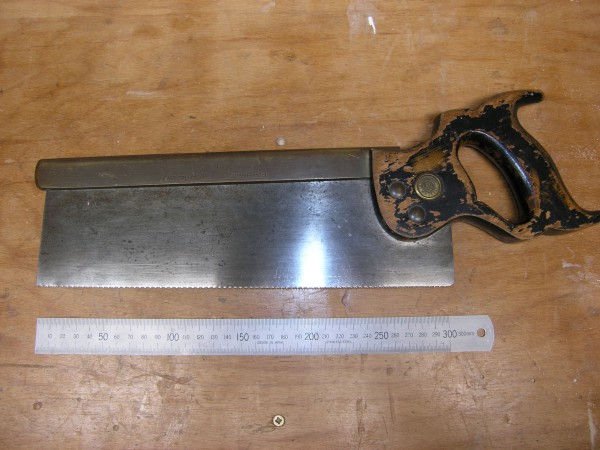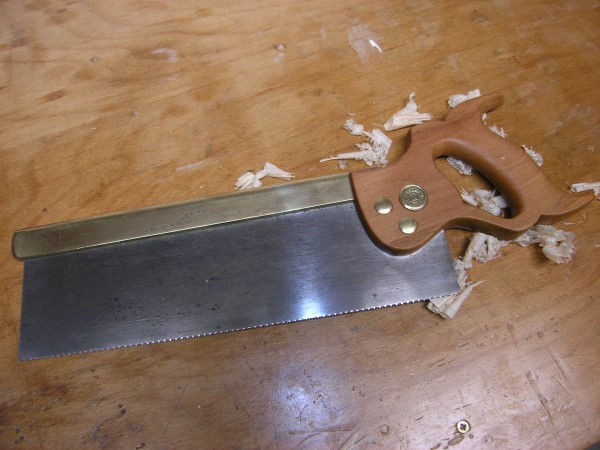GEPPETTO":2u2dq2ld said:
Hi Mike,
I believed a tool had to be suited to a personal task and that each tools is born from the factory with a precise operation (perhaps I'm wrong), which should be always the same..
But, firstly what did this saw have been achieved for? From the factory I mean.
Cheers, Gabriele
Hi Gabriele,
It is useful to have tools for dedicated tasks, it's just not always practical or possible.
A larger back-saw will cut smaller joints, with the limitations being the ability to control the cut and the joint size itself.
Small joinery saws are simply easier to control on smaller work is all. At least for most people. Too, there is the issue of how the saw is filed which may limit its use.
The saw you pointed to, the #4 back-saw, was intended for any work to which it is suited as determined by the user. If it is filed cross cut and if the fleam angle is small, it will rip nearly as well as cross cut. At least, well enough. Same with if it is filed rip, it will still cross cut and some advocate a rip being used in this manner.
For me, the issue is the depth of cut. It is easier for me to control a short rip cut such as on a dovetail or box joint if the blade is less tall and shorter. Too, I find a thinner blade takes less effort to control and cut a small joint. But if all I had was the saw in your post, I would refile it to make it cut well as a rip or a cross cut and use it that way until I had a smaller saw.
If one looks in text books on the subject, saws are designated for certain tasks based upon overall size and have the number and size of teeth corresponding to those tasks. However, as one goes back in time, one will find that in general, saws for each task generally had fewer teeth per inch than what we have become accustom to. Rip tenon saws having only 9 ppi for instance, which is my preference. Small joinery saws having 13-20 wasn't uncommon and the number of teeth being more indicative of the size/thickness of the boards being cut than merely their designation in the maker's books.
But they don't "have" to be used for a single purpose. If you have more than a single saw, then I would recommend having some for each task--the more the better <g>--but it is not an absolute necessity.
Take care, Mike






